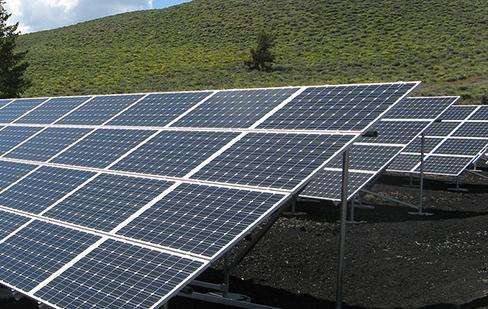Question 1: What are the commonly used technologies in biotechnology? Biotechnology is the product of the development of modern biology and its integration with related disciplines. Its core is genetic engineering centered on recombinant DNA technology, and also includes microbial and biochemical engineering. engineering, cell engineering and biological products and other fields. Cultivate and master the basic theories, basic knowledge and basic skills of modern biology and biotechnology, obtain preliminary training in applied basic research and scientific and technological development research, and have good scientific quality , a strong sense of innovation and practical ability in biotechnology. .
Modern biotechnology generally includes genetic engineering, cell engineering, enzyme engineering, fermentation engineering andprotein.
Question 2: What does traditional biotechnology include? Biotechnology includes traditional biotechnology and modern biotechnology.
Traditional biotechnology includes brewing, enzyme utilization, antibiotic fermentation, monosodium glutamate and amino acid industry, etc., and is widely used to produce a variety of Foods such as bread, cheese, beer, wine, etc. such as soy sauce, rice wine and fermented milk products.
There are both connections and qualitative differences between traditional biotechnology and new biotechnology. Modern biotechnology is a comprehensive technology created in the early 1970s and based on molecular biology, biochemistry, biochemical engineering, microbiology, cell biology and electronic computing technology.
Question 3: What are the types of fermentation? 30 points: Lactic fermentation, such as the fermentation of sour pickles by Lactobacillus plantarum
Ethanol fermentation: such as the fermentation of yeast liquor by bacteria.
Acetone butanol fermentation: For example, the production of acetone butanol fermentation is carried out by Clostridium acetobutylicum
Butyric acid fermentation: For example, butyric. acidic bacteria are used for fermentation. Butyric acid fermentation is caused by
Aerobic respiration:
Glucose + oxygen + water - carbon dioxide + water + lots of energy.
The reaction process is divided into three stages: 1. Glucose generates pyruvate in the cytoplasmic matrix, thereby reducing hydrogen and a small amount of energy
2. Pyruvate and water are generated in the cytoplasmic matrix; mitochondria Carbon dioxide, reduced hydrogen, a small amount of energy;
3. Reduced hydrogen generated earlier and oxygen generate water, a large amount of energy.
Anaerobic respiration:
Glucose - alcohol + carbon dioxide + a small amount of energy (most plants, yeast, etc.)
Or :glucose -; Lactic acid + a small amount of energy (animals, lactic acid bacteria, etc.)
That is, due to the presence or absence of oxygen, even if the organic matter is the same, the final product will be different
Question 4: There are so many fermented things.
Fermentation originally refers to the anaerobic metabolic process of microorganisms, so fermented things (should be called fermentation products) must be substances produced by microorganisms through metabolic processes anaerobes (or anaerobes). Nowadays, the process of industrial production of substances using micro-organismsmes is called fermentation, which allows many more things to be produced.
Food: soy sauce, vinegar, yogurt, fermented tofu, cheese, some types of sausages and ham, fermented glutinous rice (fermented rice wine), various sauerkraut and kimchi. . . .
Drinks: liqueurs, beer, wine and other fruit wines, various Western liqueurs (brandy, whiskey, vodka, kvass), milk wine. . .
Pharmaceuticals: various antibiotics, vitamins, anti-interferons and monoclonal antibodies. . . .
Chemical industry: acetone, acetic acid, butanol, methanol, formic acid. . . .
Biomass: active yeast, methanol protein, fermented food. . . .
Amino acids: glutamic acid (its sodium salt is MSG), lysine, aspartic acid. . . .
Organic acids: citric acid, malic acid, lactic acid, acetic acid, formic acid. . . .
Nucleotides: hypoxanthine, xanthine. . . .
Allt is certainly not yet written. With the development of biotechnology, more and more things will be produced using biological fermentation methods.
Question 5: What are the common raw materials for organic fermentation? Biological fermentation actually uses the biological effects of bacteria to carry out chemical reactions.
The raw materials for biological fermentation are therefore common organic materials:
Sugar (rice, corn, sugar cane juice, grapes, potatoes, etc.) < /p >
Proteins (soy, fish)
Others include compost (grass, animal manure)
What are the main byproducts of fermentation of l 'biomass ethanol
(1) Atom utilization rate = the ratio between the total mass of the expected product and the total mass of the product, on the basis of which the atom utilization rate of hydrogen is calculated for judgment purposest;
(2) Calculate the amount of CO and hydrogen, then calculate the amount of CO and hydrogen based on the calculation of the heat of combustion;
( 3) Calculate the amount of ethanolic substances. Ethanol makes up 50% of the reaction. according to track ① and track ②. According to the chemical equation, calculate the amount of carbon monoxide and hydrogen substances, and synthesis gas. The biogasoline synthesis reaction is: 2mCO+(2m+n)H2→2CmHn+2mH2O. components, X and Y, and X and Y are both hydrocarbons containing 8 carbon atoms. X is a homolog of benzene is C8H10, Y is an alkane and is C8H18. From the conservation of O atoms, we can know that n(H2O. ) = n(CO). Let the quantities of C8H10 and C8H18 respectively be xmol and ymol according to the equations for conservation of the carbon atom and conservation of the H atom, then calculated according to m = nM.














